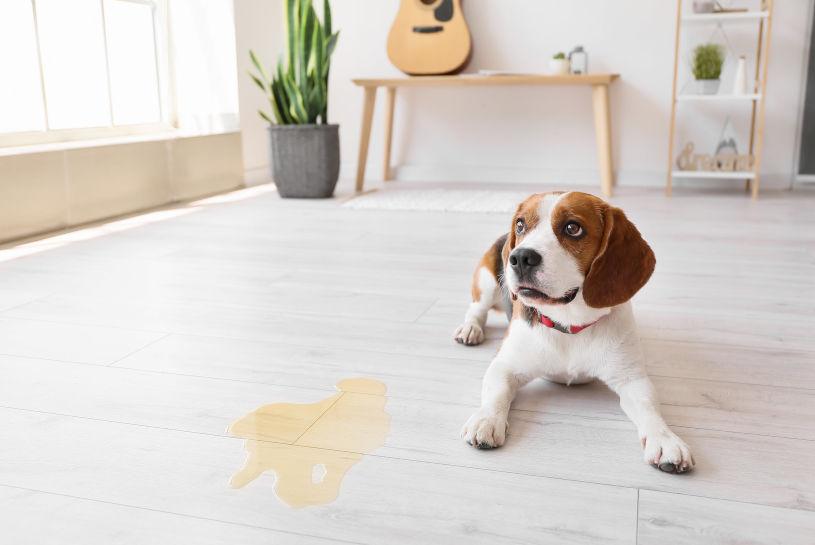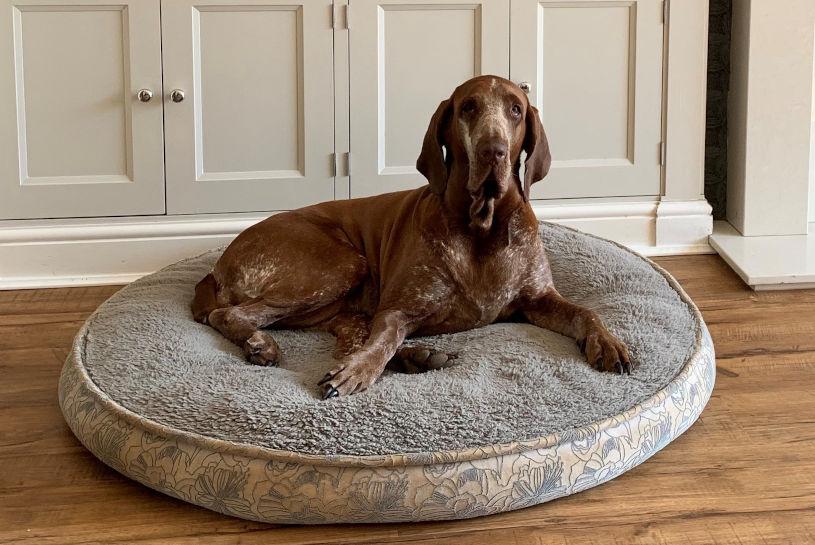Vinyl floors are fuss-free and low maintenance but still require regular care and cleaning. Our latest guide explains how to maintain vinyl flooring.
Regular maintenance of vinyl flooring
To keep your vinyl flooring in the best possible condition and looking as good as new for as long as possible, it’s important to develop some good habits and establish a care routine.
Use doormats – doormats positioned by entrance and exit points will help to minimise the amount of dirt that is brought onto the vinyl flooring, making cleaning easier. DO NOT use rubber backed floormats as these can create a chemical reaction with the flooring that can discolour your floor.
Remove outdoor shoes – removing outdoor shoes will reduce the amount of dirt and debris that gets stuck to soles, from sticking to the vinyl. Grit from outdoors can be abrasive to vinyl and can remove the finish, while sticky tarmac can discolour the flooring.
Use furniture coasters – floor protectors under furniture legs will protect against dents and scratches.
Always lift furniture – avoid dragging furniture across vinyl flooring to avoid scratches, marks and tears.
Keep pet claws clipped – long claws make it extremely challenging for dogs to walk on vinyl flooring and therefore pose a risk of slipping. Ensuring claws are kept closely clipped will minimise the risk to your dogs.
Wipe feet and paws after a walk – get into the habit of wiping feet and drying paws after a walk to avoid dirt and debris being brought into the house.
Vacuum or sweep regularly – just as with carpet flooring or tiled floors, vinyl flooring needs to be vacuumed or swept regularly. This avoids a buildup of dirt which will be difficult to remove and should be done daily.
Deal with spills immediately – when your new puppy or older dog has an accident, wipe it up as soon as possible. Likewise, any spillages should be wiped up as soon as they happen.
All of the above will help to keep your vinyl flooring in great condition, but it will need to be cleaned. A damp (not sopping wet) mop is sufficient to keep on top of dust and can be carried out after vacuuming, once a week or more frequently as necessary. Always dry your flooring afterwards.
Deep cleaning vinyl flooring and how often you do it, depends on the amount of traffic your flooring deals with. Some establishments such as veterinary clinics or doggy daycare will need to deep clean more often than a domestic household, but the process is the same.
How to deep clean vinyl floors
After vacuuming/sweeping the floor, have a look for any scuffs; scuff marks can be buffed out with a microfibre cloth and deep marks can be tackled with a paste of baking powder applied with a soft cloth. Don’t forget to clean along where the vinyl meets the skirting boards – a soft brush with the baking powder paste is enough (a baby’s toothbrush is perfect). When using a baking powder paste, don’t forget to wipe away any traces of the paste.
The floor can then be mopped with a solution of one cup of white vinegar in one gallon of warm water (with washing up liquid added if you prefer bubbles or if the floor is particularly dirty). Keep your mop damp – not dripping wet – and refresh the solution as soon as the water becomes dirty. Once you are happy that the floor is clean, mop with a dry cloth or use a microfibre cloth to ensure the floor is completely dry.
Things to avoid when cleaning vinyl flooring
Abrasive substances – it may be tempting to use a scourer or abrasive detergent on stubborn stains but they will damage the surface of the vinyl.
Very hot water – always use warm water when mopping vinyl.
Steam cleaners – even on the coolest setting, a steam cleaner is too hot for vinyl.
Wax cleaners – vinyl flooring is no-wax and wax products should be avoided as they can leave a nasty residue on the surface of flooring which is extremely difficult to remove without causing damage.
High heeled shoes – high-heeled shoes of the stiletto type can cause serious damage to vinyl flooring by way of deep dents and even tears and rips.
At Floors For Paws, our range of vinyl flooring includes the Pawsafe Commercial range, suitable for commercial properties and supplied on a roll, our Luxury Vinyl range available in stone-effect tiles or wood-effect planks, and our Pawsafe Domestic range, which is supplied in a variety of plank sizes.
For questions about any of our ranges, or if you want more information on how to maintain vinyl flooring, our experienced and friendly staff can be contacted by email at info@floorsforpaws.com or telephone on 01522 300218




